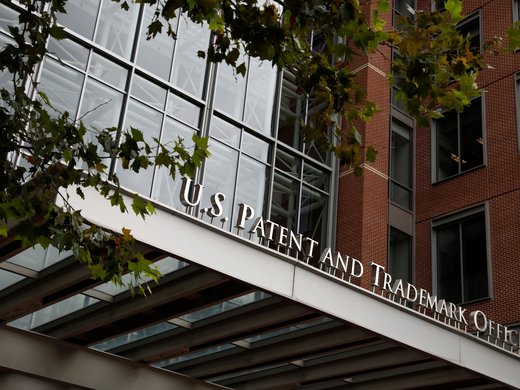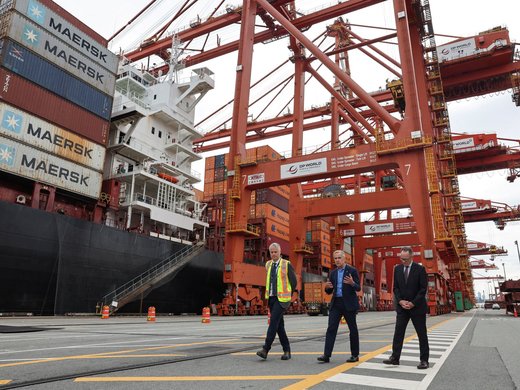Shaun Narine, Associate Professor of Political Science, St. Thomas University
Later this year, the Association of Southeast Asian Nations (ASEAN) will declare itself to be an “ASEAN Community,” the culmination of a process that started in 2003. On the surface, ASEAN appears to be more institutionalized, more active, and more engaged than at any other time in its history. ASEAN is at the centre of a number of important regional institutions, including the ASEAN Plus Three (APT) and the East Asian Summit (EAS). It is attempting to consolidate its multiple regional free trade agreements into a single Regional Comprehensive Economic Partnership (RCEP).
However, appearances are deceiving. In many important ways, ASEAN is institutionally weak and politically divided. Its ability to influence regional events may be in decline. There are a number of reasons for this, but the primary one is that all of the ASEAN states see themselves as politically and economically fragile. As a result, they continue to guard their sovereignty, limiting ASEAN’s ability to evolve into an independent entity that can speak with a single voice. Yet ASEAN may be the best that it can be, given the political limitations of its members and the relatively weak economic foundation on which Southeast Asian institutionalism is built.
In the aftermath of the 1997-1999 Asian Economic Crisis and a host of other regional events in which ASEAN proved inconsequential (such as the 1999 conflict in East Timor and the “regional haze” problem caused by man-made forest fires in Indonesia), ASEAN’s international reputation as an effective international organization took a beating. Southeast Asia also felt under economic pressure from Chinese competition. In 2002, Singapore suggested that ASEAN counter the Chinese challenge and rejuvenate the organization by forming an “ASEAN Economic Community” (AEC) that could compete with China for foreign investment by offering potential investors an integrated market of 600 million consumers. Indonesia was the Chair of ASEAN in 2003 and it was concerned that, as a relatively poor country, it would have little to contribute to the discussion of an AEC. Indonesia suggested that ASEAN also consider creating an ASEAN Security Community (ASC). The Philippines then suggested that ASEAN create an ASEAN Socio-Cultural Community (ASCC) to encourage social and cultural interaction across the region and to blunt criticisms that ASEAN was an institution run by and for the political elites of Southeast Asia. Combined, these three “pillars” would form the “ASEAN Community.”
Over the next few years, various steps in the progress towards an ASEAN Community followed. ASEAN moved the completion date for establishing the ASEAN Community from 2020 to 2015; it renamed the ASC the “ASEAN Political and Security Community” (APSC). In 2007, ASEAN introduced the ASEAN Charter, a document that defines the principles of the AC. The organization issued blueprints for each of its “pillars.” The ASEAN Charter came into effect in 2008. ASEAN created the ASEAN Intergovernmental Committee on Human Rights (AICHR) to monitor human rights in the ASEAN states in 2009. The ASEAN Human Rights Declaration followed in 2012.
During this time, ASEAN became the linchpin for a number of new regional institutions. The APT formed during the Asian economic crisis and quickly emerged as one of the Asia Pacific’s most consequential institutions. The EAS has provided the leaders of the major powers of the Asia Pacific with a venue in which to meet. Numerous multilateral initiatives are associated with these organizations.
Given these developments, it may appear that ASEAN is on the verge of a renaissance. However, ASEAN’s many initiatives obscure a situation that is considerably more complicated. When it was created in 1967, ASEAN was a group of five states that shared a fear of communist insurgency and faced an uncertain regional security environment. However, most of the ASEAN states were also at odds with each other, mostly over territorial disputes. The ASEAN states agreed to put aside their differences and create the political space in which to pursue economic and political development. ASEAN was, essentially, a non-aggression pact between its members. Its efforts at economic cooperation largely failed, but its members developed a habit of political consultation. Vietnam’s invasion of Cambodia in 1978 gave ASEAN an issue that concentrated its energies and activities and increased its international presence. But the focus on Vietnam detracted from ASEAN’s meagre efforts at community-building and created an illusion of intra-ASEAN unity that was never entirely true. In fact, the organization was limited by the different interests of its member states, the fact that all of them retained a commitment to state sovereignty, and the ASEAN norms that ensured that non-interference in the affairs of member states remained ASEAN’s cardinal rule. With the end of the Cold War, ASEAN cast about for ways to retain its regional institutional primacy even as its members wrestled with their continuing inability to create a strongly institutionalized and effective structure.
In the modern era, the ASEAN Community is the newest iteration of this internal struggle. The different pillars of the ASEAN Community are lacking in institutional strength. The ASEAN Economic Community is the strongest and most active of the three pillars, yet intra-ASEAN trade remains a small fraction of ASEAN’s overall economic activity. Southeast Asian businesses resist using intra-ASEAN trade measures and considerable non-tariff trade barriers remain between member states, in response to the concerns of local businesses and the apprehension of governments uncertain about the political and economic effects of more open economic activity. The APSC and the ASCC remain very limited in what they can do, reflecting their origins as political afterthoughts. The AICHR is toothless. As many ASEAN states implement draconian political practices and Myanmar ramps up violence against its ethnic minorities (including ethnic cleansing against its Rohingya population), the AICHR remains silent. Even ASEAN’s much-vaunted ability to ensure peace between its members has been challenged in recent years when, between 2008-2011, Thailand and Cambodia engaged in military conflict over the Preah Vihear temple. ASEAN played little role in resolving that conflict. The ASEAN Charter pays lip service to human rights and democracy but gives primacy to the need to respect non-intervention, state sovereignty and national differences.
ASEAN has had relatively little success in building a larger Southeast Asian consciousness between its members. The general publics of the ASEAN states are mostly unaware of the institution and have little sense of common identity with the people of their region. The “Southeast Asian identity” is far less important to them than the many local identities that continue to challenge the national identity building projects of the member states. Even between ASEAN’s elites, there remains considerable distrust and even antagonism. For example, Singaporean elites continue to see Indonesia and Malaysia as the biggest threats to their state; mutual antagonism is exacerbated by the many outstanding intra-ASEAN territorial disputes. If ASEAN has succeeded in creating a regional consciousness, it is only shared by the academic, political and diplomatic elites who meet regularly as part of the ASEAN process. But this is not enough to counteract the influence of others who put national interests ahead of any regional interest nor is it helped by ASEAN principles that reinforce state sovereignty.
If ASEAN’s internal cohesion is questionable, perhaps ASEAN’s greatest potential lies in its ability to mediate between the great powers of the Asia Pacific. As during the Vietnam/Cambodia era, ASEAN could find purpose and focus in dealing with the larger regional environment. The most powerful states in the world—the United States, China, Japan, India and Russia—are shaping the global order of the next century in the Asia Pacific. ASEAN’s status as the region’s primary multilateral organization lies in the fact that ASEAN is a default on which the powerful states can agree. However, providing the venue in which more powerful states shape the regional environment is not the same as having a voice at the table. Most of the ASEAN states agree on the need to keep the United States engaged in the Asia Pacific. However, to differing degrees, ASEAN states are vulnerable to economic and political pressure from the states to which they are more closely allied. ASEAN itself would surely crack under the pressure if its members were forced to choose sides in any great power dispute. If ASEAN could unite and speak with one voice, its regional influence would increase exponentially. But playing such a role requires a level of political unity that the organization has not yet shown and which the “ASEAN Community” will do little to change.
ASEAN’s limitations are not simply manifestations of a lack of political will. Its member states are engaged in the difficult process of building politically and economically stable and sustainable states out of many disparate social, ethnic and religious groups. While one can certainly object to how many ASEAN states have gone about implementing this process, they do have to manage considerable internal divisions. It may be short-sighted, but it is not surprising that they are wary of creating an institution that might challenge their ability to act as sovereign states.
If the ASEAN states’ economic interaction were greater, there would be more incentive and ability for them to act as a politically unified entity. (Though the European Union stands as a cautionary tale about underestimating the difficulties of building a political and social institution out of many disparate parts) For now, however, the ASEAN Community will remain limited in what it can achieve and the level of unity that it represents.


